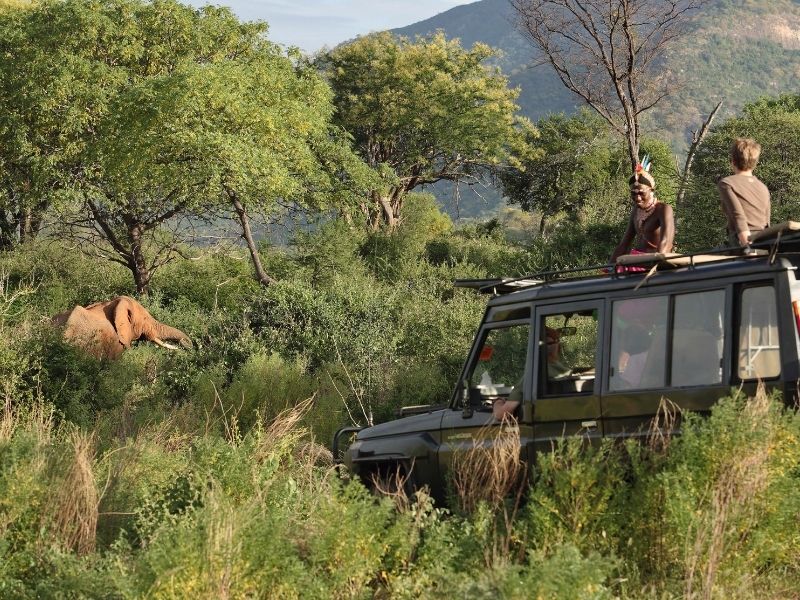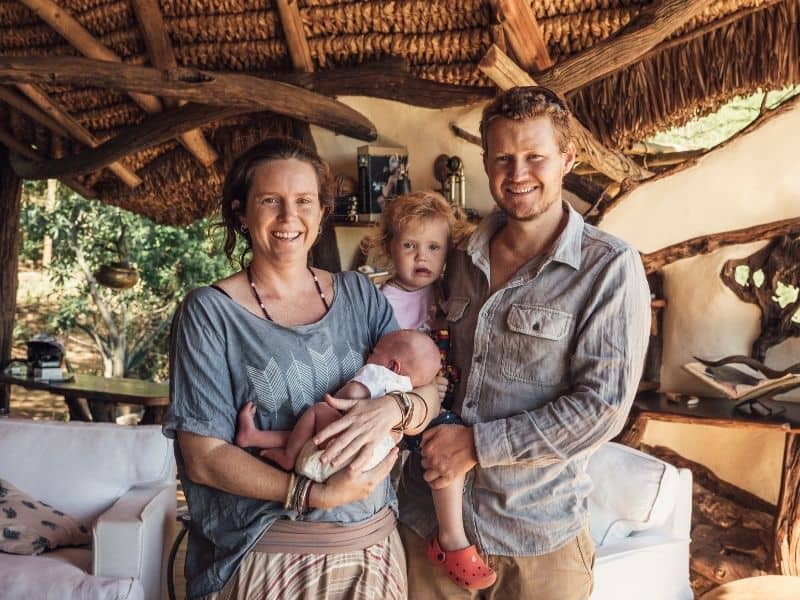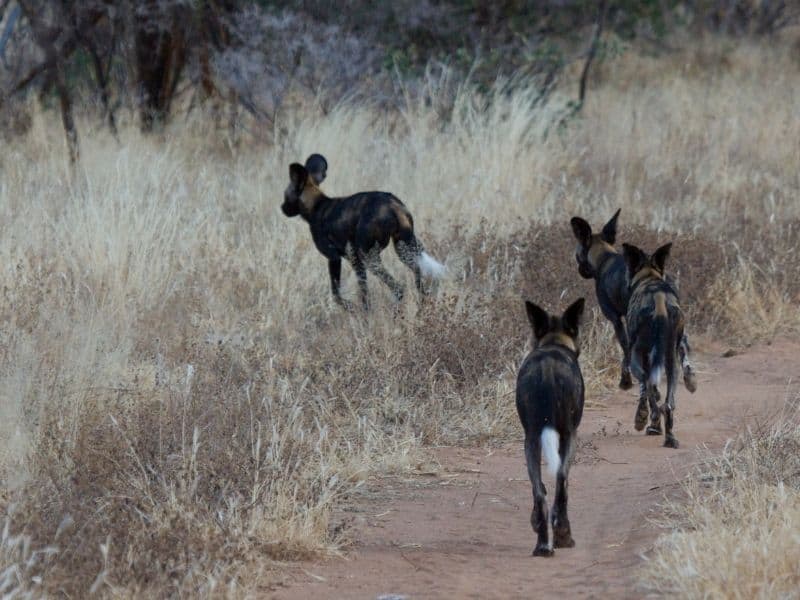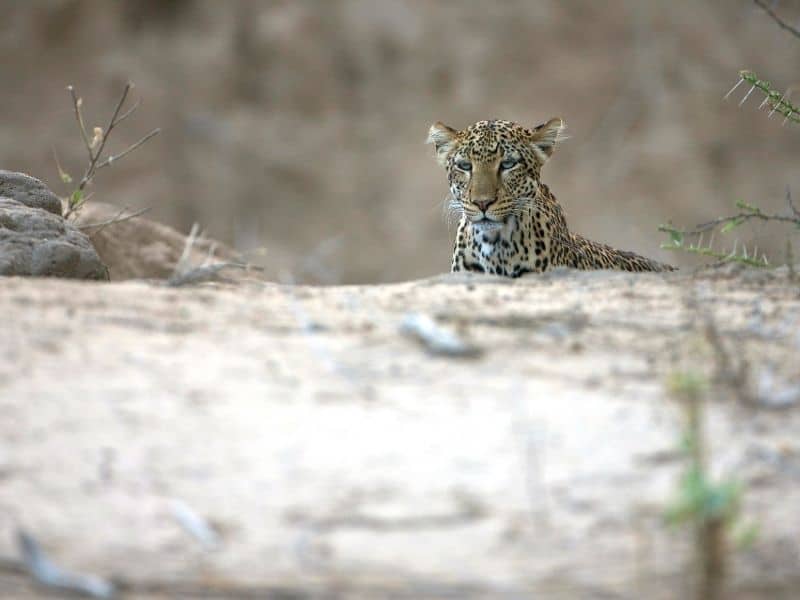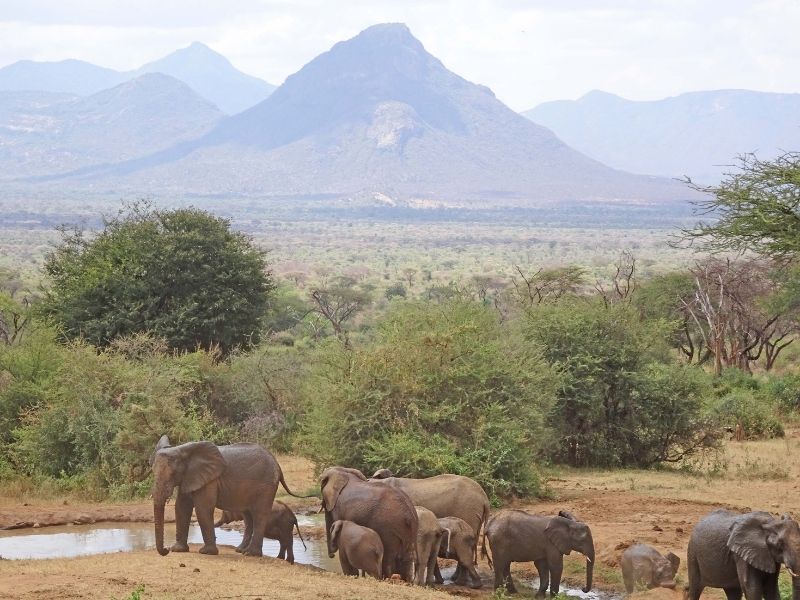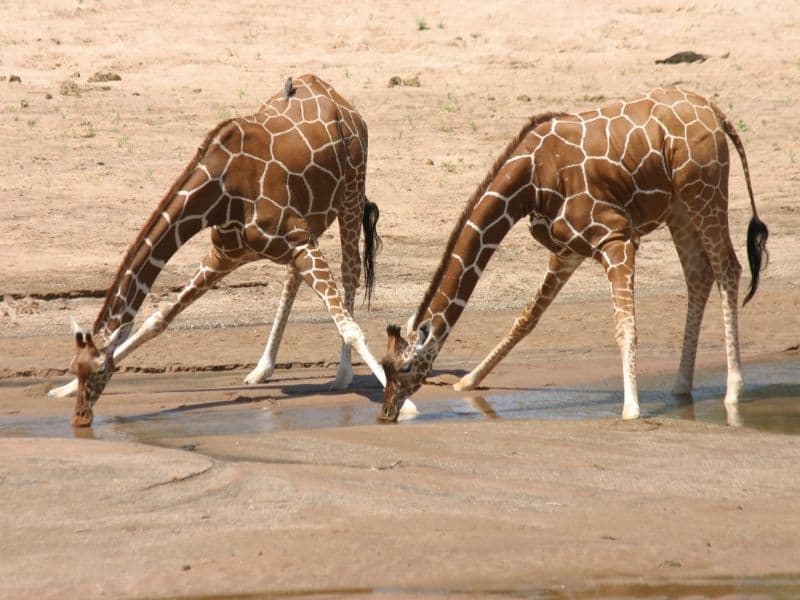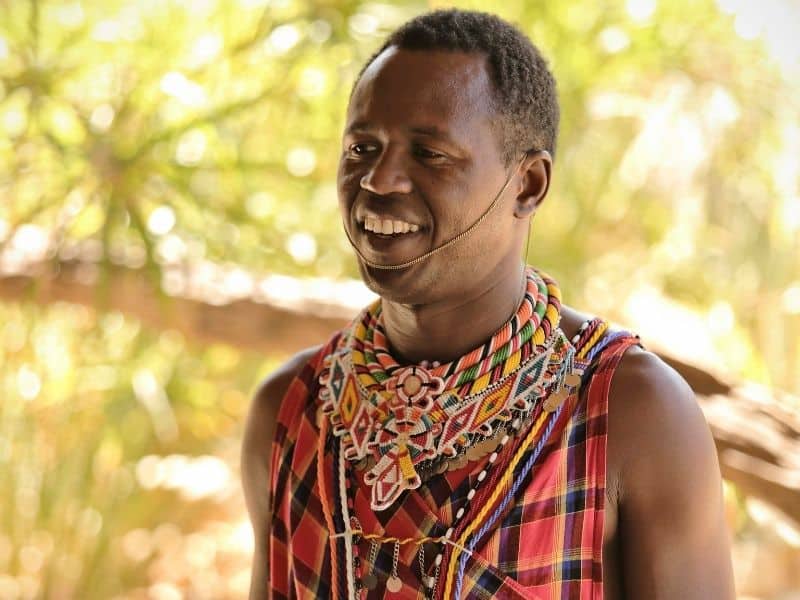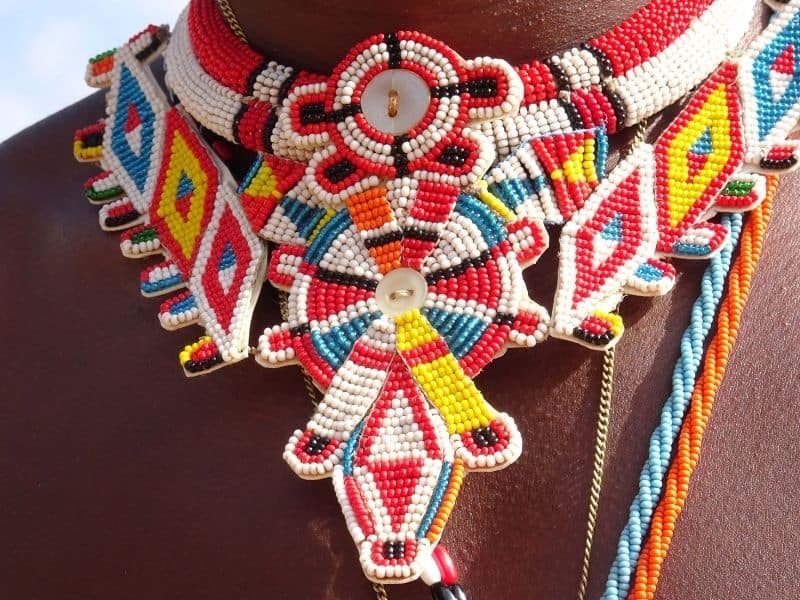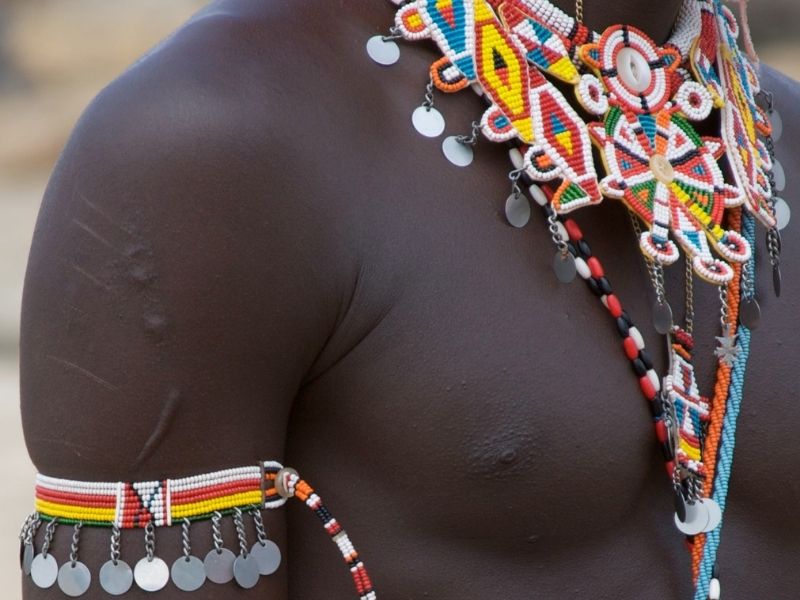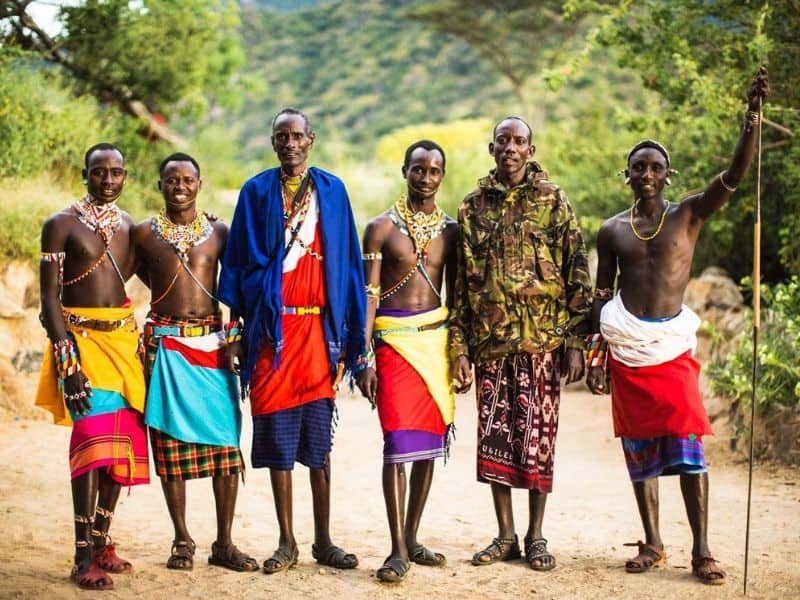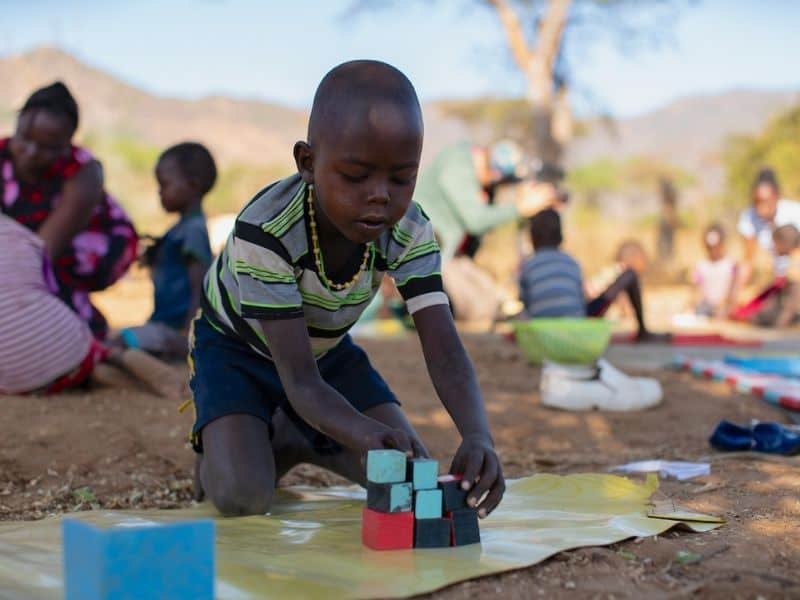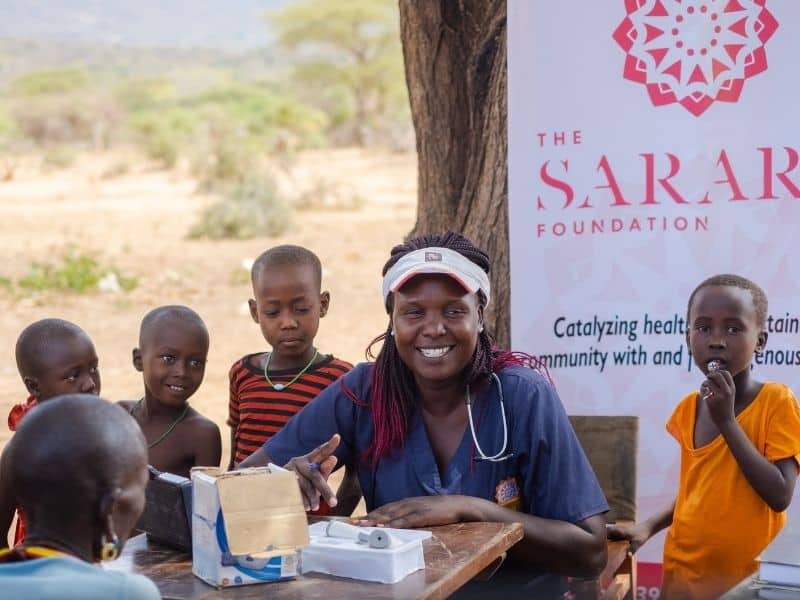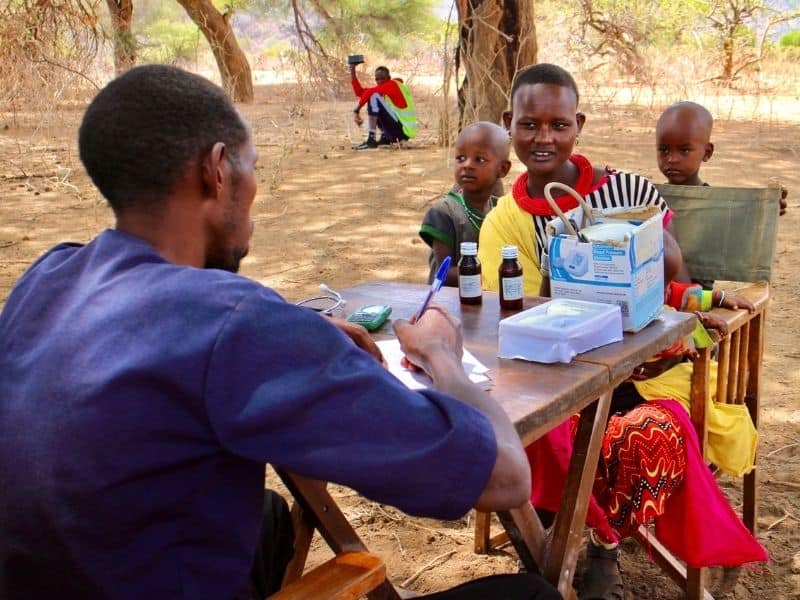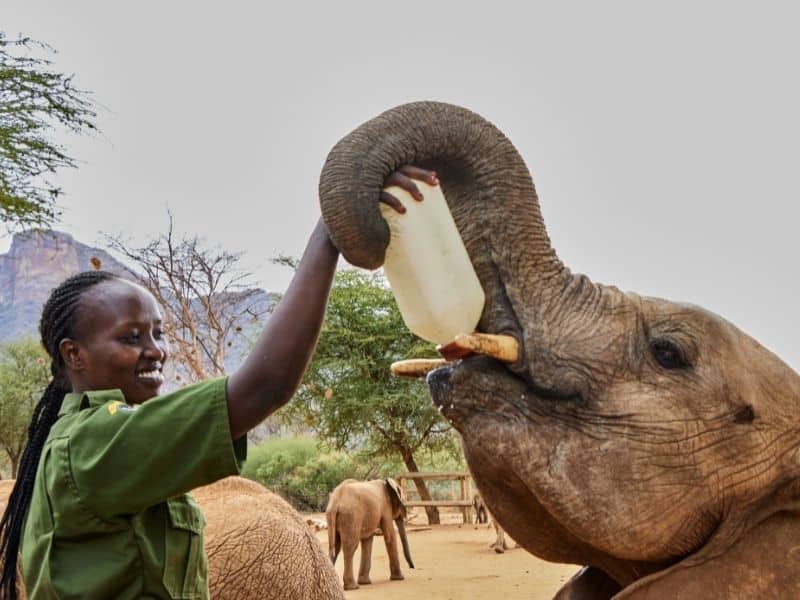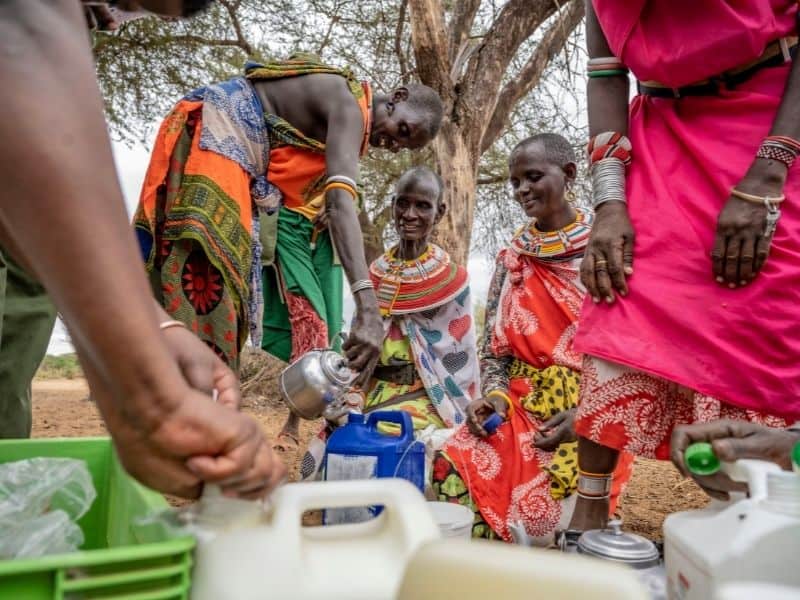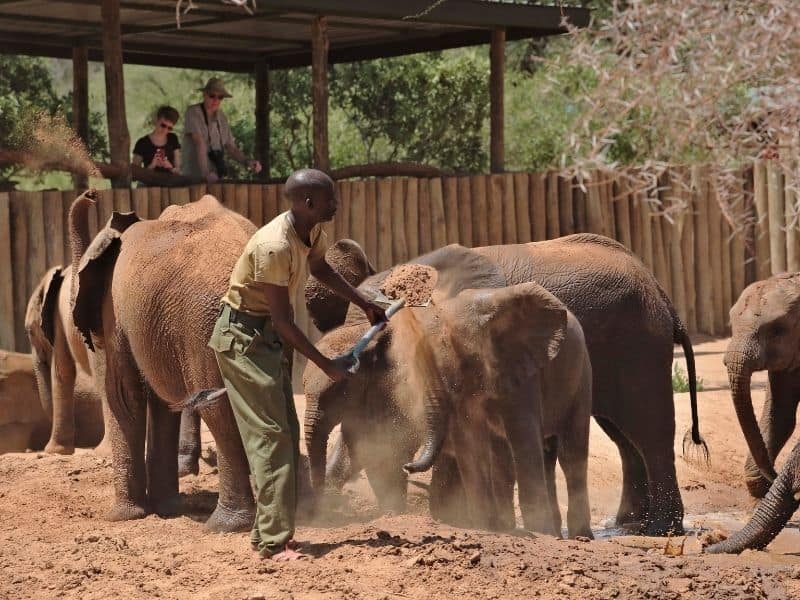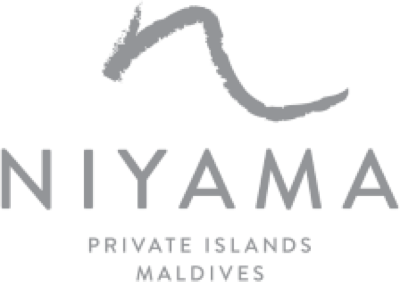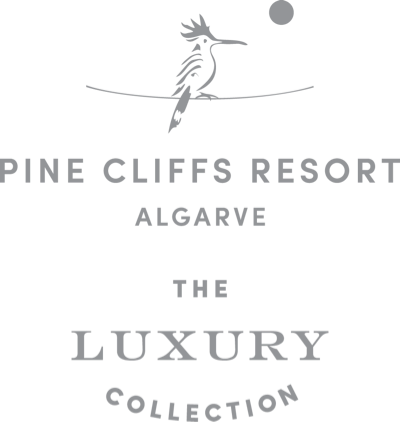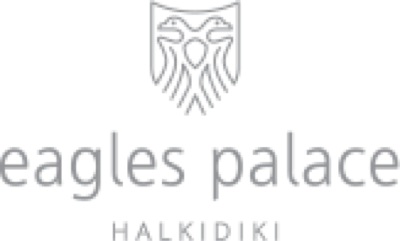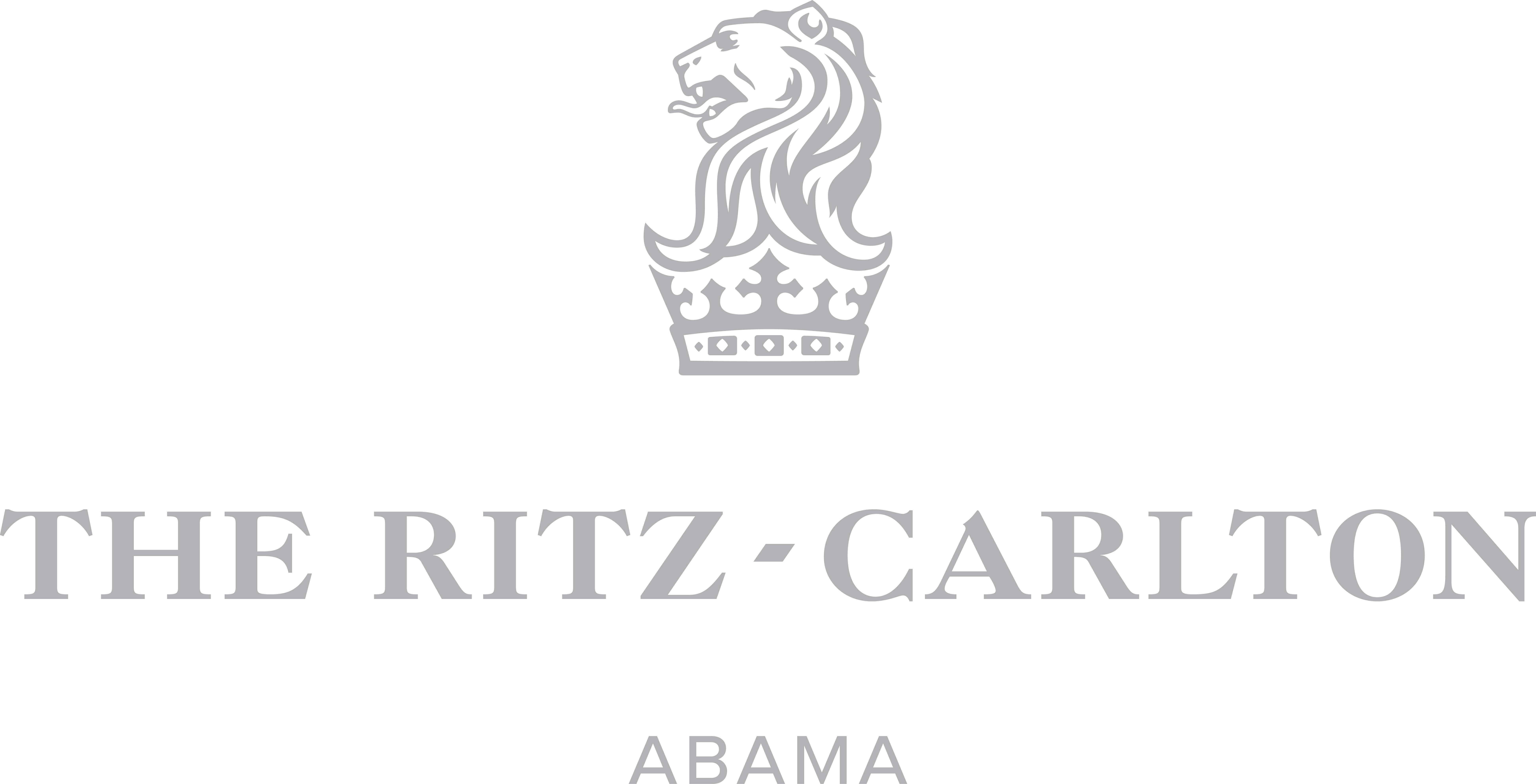Community, a conversation.
We begin a dialogue with Jeremy Bastard of Sarara, a luxury eco-lodge in Kenya’s Namunyak Conservancy which encompasses the entire Mathews Range. Only accessible by private charter, in the remote reaches of Northern Kenya, the conservancy is home to a unique combination of semi-arid desert and afro mountain range. A 100% community-owned lodge and conservancy, it has become a flagship model for conservation in Africa, and we want to know more about its incredible story. We wish to understand the workings behind the model of togetherness that has demonstrated the working towards successful reversal of global climate change at a local level.
First, we delve into the history of the Bastard family and the inception of Sarara. Jeremy explains he is a fourth-generation Kenyan, whose family arrived back in 1904. We begin to discuss the start of the Sarara dream, which came to fruition when his father, Piers, and colleagues developed the concept back in the early 90s. He explains that this was a very different time, an era when “community conservation” didn’t mean anything. “My father and others had seen these rural, very remote places, completely devastated by the poaching epidemic of the 70s and 80s… suffering from a lack of governance and therefore a lack of management, structure or stability”.
We must remember where we are talking about when we speak of management and stability. The beauty of Sarara is its stark isolation from the modern world and ties with tradition and ancestral heritage. The area was once renowned for its impressive wealth of elephants and rhinos. Approximately 4,000 black rhinos and 15,000 elephants roamed the area. A grassland that attracted a multitude of wildlife, its wealth also enticed poachers. The global surge in demand for ivory and rhino horn devastated the environment, and the plains and native wildlife suffered as a result.
During Sarara’s inception, the Sarara Valley had no form of native economy. Jeremy’s father, Piers took this as an opportunity to put forward the idea of a community tourism model as the revenue generator the area so very much needed.
So, how did this become a success?
Successful sustainable tourism models are built through a continuous balance between three pillars: economic development, nature conservation and the involvement of the local community. We ask how Piers successfully managed to convince the community to become involved. Jeremy explains that it was very much a team effort, where trust had to be built. At Sarara’s inception, this started very simply by involving a small group of people and sharing the benefits of such an approach. Samburu people were employed at Sarara, becoming lodge staff, guides and protectors of the fragile environment. Subsequently, members of the community, such as pastoralists, indirectly benefitted by supplying their goods and services, and made an income from it.
From there, neighbouring communities started to see the benefits for participants; children were starting to go to school, lands were improving, they weren’t raided by neighbouring tribes and there was often a vehicle to drive their sick to hospital. Jeremy states “that created this incredible organic buy-in and all the neighbours jumped in and said, well actually, we can see it and we want to be a part of it. And therefore, the conservancy expanded from just being a small piece of land to an 850,000 acre community-owned conservancy. And from there, it just started to flow.”
As soon as Piers educated the community on the collective benefits of tourism, and put the model into action, wildlife returned and people benefitted. “Fast forward and we have a very well-functioning community governance model. This particular community probably holds the largest population of reticulated giraffe in the country now – having gone from perhaps six in the 90s to approximately 450 today, which is an incredible success story.” This in itself is an extraordinary example of how this particular governance model provides an effective form of conservation; it demonstrates the benefits for all of the people involved and does not accept or tolerate any form of exclusion or superiority.
The success of the project is also due to a natural blend of leadership structures, part managed by the Kenyan government and part managed by the Samburu tribe. There is a board of trustees who are locally elected from different parts of the conservancy. They represent their units and their people, which has a very positive effect on the partnership. Jeremy explains; “The lodges, the land, everything we do here – we ensure that it retains community ownership because that builds the trust and ensures that everybody is invested in making it work. There’s no us and them. It’s all one collective trying to do the job.” From deep within the community, everyone feels directly in control of their land, their assets and the destinies of their people.
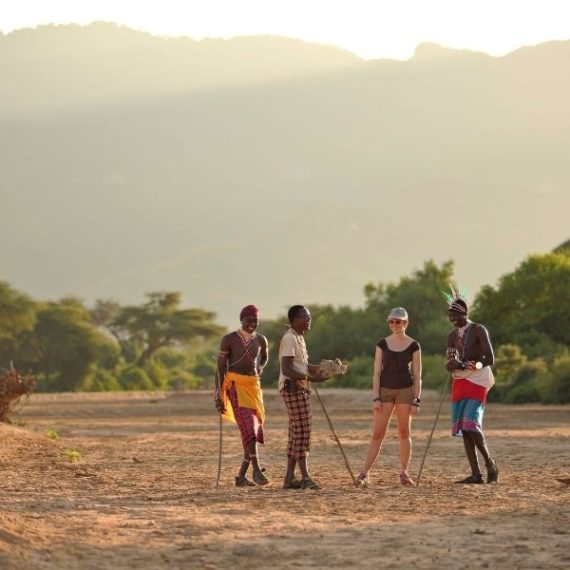
The most precious commodity of the Sarara Valley is its deep traditional heritage. Jeremy explains early on that you cannot just help the wildlife, but you must help the people first. In Jeremy’s (self-admitted) bias, he boasts that the Sarara Valley is one of the only areas left in the world where authentic culture and deep traditional heritage remains. Semi-nomadic people who are strongly connected to their culture and ancestral tradition, the Samburu tribe lives at peace with nature. Sarara and Reteti Elephant Sanctuary sit within the lands of the Namunyak Conservancy, which means a “place of peace”, a beautiful reflection of wildlife and the Samburu people living in harmony. Pioneers of eco-tourism, they are traditional nomadic pastoralists whose daily lives revolve around their livestock.
Sitting in the heart of the Samburu lands, warrior culture lives on. Jeremy describes an incredible scene of people, living in the same manner their ancestors would have 400 years ago, thriving from the words of ancient wisdom and the culture of the land. Jeremy’s eyes light up as he speaks of his neighbours, the people he shares beautiful Sarara with. He explains the vibrant communities have recently pushed a new generation of warriors through the ranks, which happens every 12 years or so. Each generation has its own style and flair, and the warriors take on the responsibility of the safety of their tribe. “So, they all sort of put their own flair to it and we’re seeing this new generation using interesting colours to represent themselves. A lot of very bright shoelaces and socks and all sorts of things. But it’s wonderful. It’s very, very vibrant.”
Samburu means butterfly in Maasai, which is reflected through the people’s colourful dress and elaborate jewellery. Continuing the rituals of their ancestors, dancing is a huge part of their culture. It serves to bind and enrich the community and goes back hundreds of years. ‘The Singing Wells’ is an incredibly unique age-old tradition of Samburu warriors. A beautiful daily ritual, warriors journey to the wells with their cattle. They dig for water and chant family songs, chants that are only recognised by their cattle. A beautiful intimate tradition between the people and their livestock, it is requested and respected that no photographs are taken as it could change the people’s lifestyles forever.
We wonder how the traditions of past ancestors enable or disable the future of the tribes. We ask Jeremy about the employment of local Samburu tribespeople, and he states that an impressive 75% of Sarara’s staff are employed from within the conservancy. They only employ within, except for specialists. People arrive as Maa Samburu speakers who have never held a job and leave as English speakers who become fantastic guides. He speaks fondly of Robert Lemaiyan who started working in housekeeping and made his way up as a guide and on to a manager. “He’s become quite a well-known figure now, and people often come back just to see Robert.”
The Sarara Foundation
Speaking of The Sarara Foundation’s Cradle to Career program, Jeremy explains that to fully commit to the landscape, you must commit to its people. “We can’t have the conversation about wildlife protection and saving some of these highly endangered species until life at a household level improves for people.” This starts from pregnancy to birth. In Kenya, there is a high infant mortality rate which has a huge impact on the social demographic, and thus, the thought process of the community. Sarara monitors and takes care of pregnant mothers, supports infants through to early childhood and on to a tertiary level where the hopes are to find them work in the same region, all whilst retaining their cultural identity.
Jeremy tells us about the Nomadic Montessori initiative operated in partnership with AMI, Association Montessori Internationale. An initiative that started in 2018, Sarara has successfully developed nomadic Montessori schools focused on early childhood. The first of its kind in the world, it is sensitive to the needs of the community and the unique environment they live in. Everything is considered to improve their learning capabilities including increasing nutritional intake for better learning. Jeremy states that there are over 100 children in these schools across the conservancy and they’re hoping to grow numbers by introducing two more schools by the end of 2021.
Living in harmony
We continue our conversation around a hot topic of the 21st century in Africa, human-wildlife conflict. Looking back on the Sarara Valley which had suffered a serious decline in wildlife diversity, we ask Jeremy how the community efforts have affected the wildlife presence in the area. In all truthfulness, we were not prepared for his response. Never in our years of experience have we listened to a story where wildlife has so successfully returned through the basis of trust, rather than reintroduction. Jeremy speaks of his childhood, where he remembers stark scenes of little to no wildlife. Discussing giraffe, numbers 20 years ago were as little as 6 on the conservancy. This was due to the fact that the locals enjoyed giraffe meat and saw no other benefit to them. By introducing low-impact tourism as the main driver of revenue, communities began to see the value in giraffe; people were paying to stay in the lodge to see them, their families were being hired as guides and they were receiving an economic benefit. With this, there was an organic buy-in. And so, “there’s been some inward migration. We did a count at the beginning of the year, and it was approximated about 450 in the area”, magnificent when you compare with only six 20 years prior. “You hear of extinctions and mass die-offs … but in this area, it’s been a wonderful success story. And the community are very, very proud of it too.”
Locally-led conservation efforts have greatly helped the elephant population in various ways including through the Reteti Elephant Sanctuary, co-founded by Jeremy and his wife, Katie. Its success lies in the pushing of ownership and management of wildlife right into the hands of the community. The decline in elephant began with poaching and human-wildlife conflict. The only way for these magnificent creatures to overcome their decline in the area was for them to become an economic benefit to the locals. Discussing Samburu pastoralists, he explains that they “have this wonderful internal economy whereby female pastoralists are supplying the elephants with goat’s milk and benefiting through the income as a result.” That is not only relieving friction and tension in terms of conflict with elephants, but it is also providing a line of income that they would otherwise not have. “For us, I think that’s one of the most exciting things going on in Northern Kenya at the moment.”
Jeremy tells us the heart-warming story of how the elephants have returned, not only thanks to the sanctuary but through their memory and building of trust. By the late 80s to early 90s, a population of near 30,000 elephants dwindled down to the low thousands, with approximately only 400 elephants remaining in the entire mountain range. Elephants are highly intelligent creatures. They recognised which areas were safe and had determined Sarara’s surrounds as dangerous. From collecting data, the team at Sarara were able to determine that elephants were waiting for nightfall to run across areas they felt were a threat – thus showing researchers what areas were safe and unsafe in the eyes of the elephants. “It not only showed which areas were dangerous, which needed more input, but also which areas they were finding safe. The Sarara Valley became a sanctuary for them, and they really flooded back in.”
Fast forward to 2021, and you would easily count 3,000 – 4,000 elephants on the conservancy. As a knock-on effect, more animals returned. More elephants meant that more vegetation was consumed, which in turn allowed space for more grass to grow. The change in the landscape by the reduction in trees and increase in grass and space meant more species of wildlife returned, creating a diversity of herds and thus a diversity in predators. It is a beautiful example of how community conservation has allowed for the great wilderness of Kenya to prosper once again.
We ask about the strategy for the future. “I hope that we’ve developed a model here that will reverse the effects of climate change. We’re very confident that we’ve already done so over the last 20 years. Now we just need to push harder.” Capturing the essence of Kenya’s truly magnificent wilderness and the beauty of Samburu traditions, Sarara is the essence of togetherness; working side by side to create a better world. To come to Sarara is to experience a feeling that you don’t get anywhere else, and appreciate a new way of looking at safari, and Africa.
OROKO would like to extend a huge thank you to Jeremy and the team at Sarara. If you would like to learn more, please visit https://sarara.co/ourstory. As our valued partners in Kenya, OROKO offers tailored sustainable holidays and experiences to include the magnificent property of Sarara.


